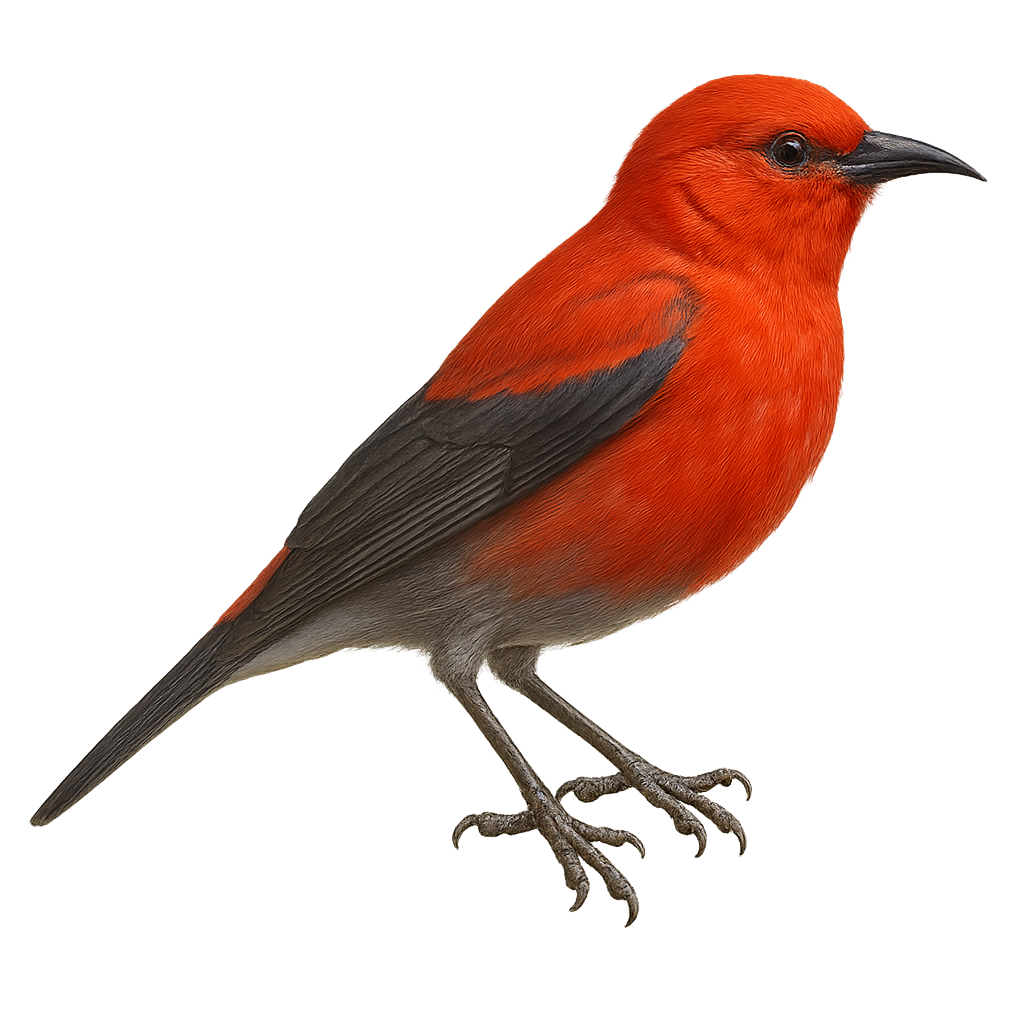Your wildlife photography guide.
Explore the apapane in detail, study its behavior, prepare your shots.
Where to observe and photograph the apapane in the wild
Learn where and when to spot the apapane in the wild, how to identify the species based on distinctive features, and what natural environments it inhabits. The WildlifePhotographer app offers tailored photography tips that reflect the apapane’s behavior, helping you capture better wildlife images. Explore the full species profile for key information including description, habitat, active periods, and approach techniques.
Apapane
Scientific name: Himatione sanguinea

IUCN Status: Least Concern
Family: FRINGILLIDAE
Group: Birds
Sensitivity to human approach: Suspicious
Minimum approach distance: 10 m
Courtship display: March to June
Incubation: 13-15 jours
Hatchings: March to July
Habitat:
Rainforests, woodlands, scrublands
Activity period :
Primarily active during the day, with peak activity in the morning and late afternoon.
Identification and description:
The Apapane, or Himatione sanguinea, is an endemic bird of Hawaii, belonging to the Fringillidae family. This medium-sized bird is recognizable by its bright red plumage, contrasting with its black wings and tail. Its curved beak is adapted for nectar consumption, its primary food source, although it also feeds on insects. The Apapane plays a crucial role in pollinating native flowers. It is often observed in high-altitude rainforests, moving in noisy flocks. Although its population is stable, it is threatened by habitat loss and avian diseases. The Apapane is a symbol of the unique biodiversity of the Hawaiian Islands.
Recommended lens:
400mm – adjust based on distance, desired framing (portrait or habitat), and approach conditions.
Photography tips:
To photograph the Apapane, focus on the rainforests of Hawaii where it is most active. Use a telephoto lens of 400mm or more to capture detailed images without disturbing the bird. Be patient and discreet, as the Apapane is suspicious. The best times to observe it are early morning or late afternoon, when the natural light is soft. Bring a tripod to stabilize your camera and adjust your settings to capture the bright colors of its plumage.
The WildlifePhotographer App is coming soon!
Be the first to explore the best nature spots, track rutting seasons, log your observations, and observe more wildlife.
Already 1 439 wildlife lovers subscribed worldwide

